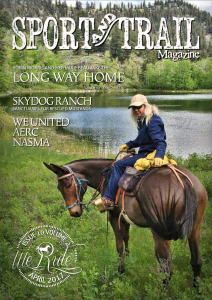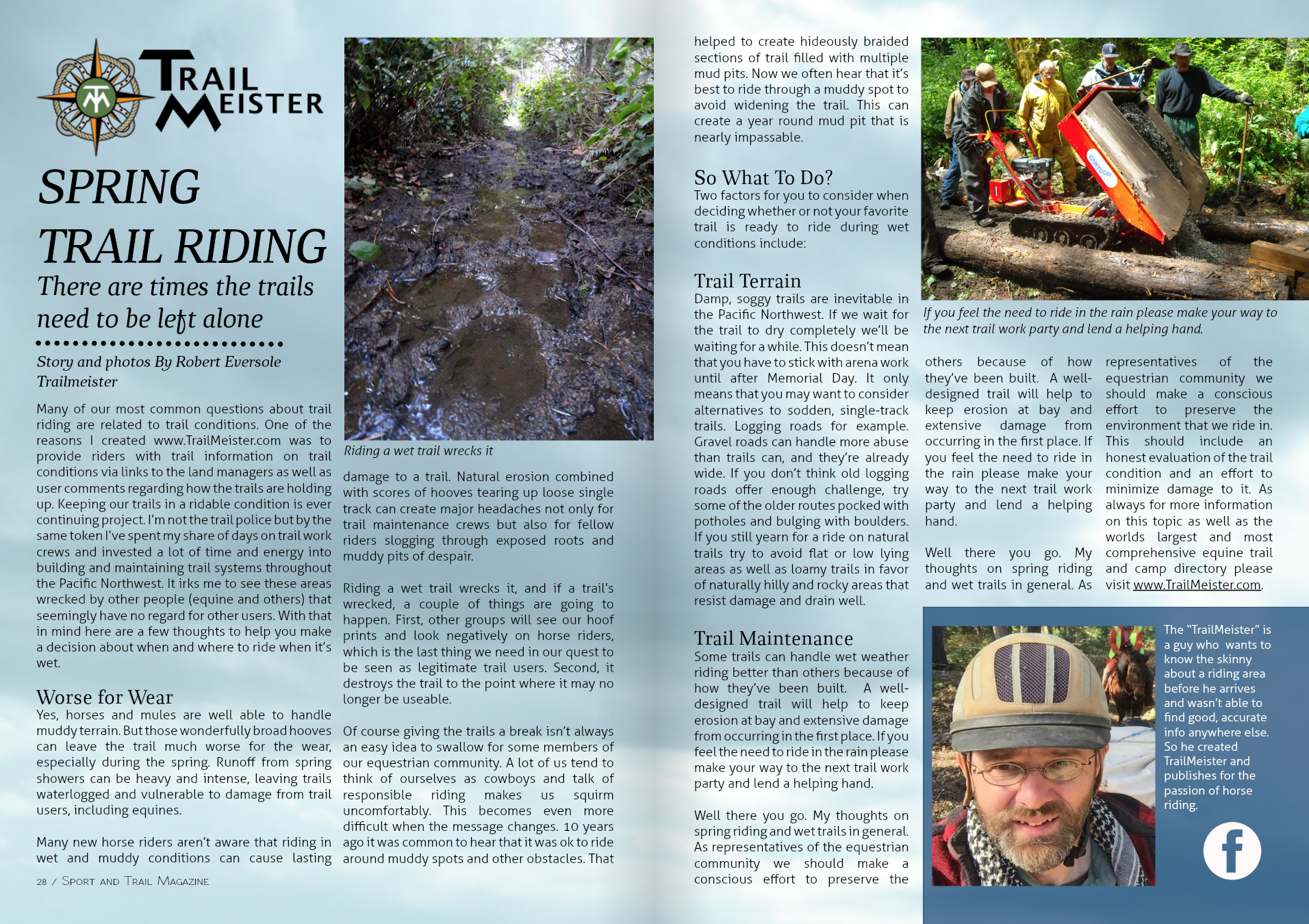 Spring Trail Riding – There are times the trails need to be left alone.
Spring Trail Riding – There are times the trails need to be left alone.
As published in Sport and Trail Magazine, April 2017
Many of the most common questions about trail riding are related to the trails’ conditions? One of the reasons I created www.TrailMeister.com was to provide riders with information on trail conditions via links to the land managers as well as user comments regarding how the trails are holding up. Keeping our trails in a ridable condition is a never-ending project. I’m not the trail police but by the same token I’ve spent my share of days on trail work crews and invested a lot of time and energy into building and maintaining trail systems throughout the Pacific Northwest. It irks me to see these areas wrecked by folks that seemingly have no regard for other users. With that in mind here are a few thoughts to help you make a decision about when and where to ride when it’s wet.
Yes, horses and mules are well able to handle muddy terrain. But those wonderfully broad hooves can leave the trail much worse for the wear, especially during the spring. Runoff from spring showers can be heavy and intense, leaving trails waterlogged and vulnerable to damage from trail users, including equines.
Many new horse riders aren’t aware that riding in wet and muddy conditions can cause lasting damage to a trail. Natural erosion combined with scores of hooves tearing up loose single track can create major headaches not only for trail maintenance crews but also for fellow riders slogging through exposed roots and muddy pits of despair.
Riding a wet trail wrecks it, and if a trail’s wrecked, a couple of things are going to happen. First, other groups will see our hoof prints and look negatively on horse riders, which is the last thing we need in our quest to be seen as legitimate trail users. Second, it destroys the trail to the point where it may no longer be useable.
Of course giving the trails a break isn’t always an easy idea to swallow for some members of our equestrian community. A lot of us tend to think of ourselves as cowboys and talk of responsible riding makes us squirm uncomfortably. This becomes even more difficult when the message changes. 10 years ago it was common to hear that it was ok to ride around muddy spots and other obstacles. That helped to create hideously braided sections of trail filled with a multiple mud pits. Now we often hear that it’s best to ride through a muddy spot to avoid widening the trail. This can create a year round mud pit that is nearly impassable. So what to do?
Two factors for you to consider when deciding whether or not your favorite trail is ready to ride during wet conditions include:
Trail Terrain – Damp, soggy trails are inevitable in the Pacific Northwest. If we wait for the trail to dry completely we’ll be waiting for a while. This doesn’t mean that you have to stick with arena work until after Memorial Day. It only means that you may want to consider alternatives to sodden, single-track trails. Logging roads for example. Gravel roads can handle more abuse than trails can, and they’re already wide. If you don’t think old logging roads offer enough challenge, try some of the older routes pocked with potholes and bulging with boulders. If you still yearn for a ride on natural trails try to avoid flat or low lying areas as well as loamy trails in favor of naturally hilly and rocky areas that resist damage and drain well.
Trail Maintenance – Some trails can handle wet weather riding better than others because of how they’ve been built. A well-designed trail will help to keep erosion at bay and extensive damage from occurring in the first place. If you feel the need to ride in the rain please make your way to the next trail work party and lend a helping hand.
Well there you go. My thoughts on spring riding and wet trails in general. As representatives of the equestrian community we should make a conscious effort to preserve the environment that we ride in. This should include an honest evaluation of the trail condition and an effort to minimize damage to it. As always for more information on this topic as well as the worlds largest and most comprehensive equine trail and camp directory please visit www.TrailMeister.com.


